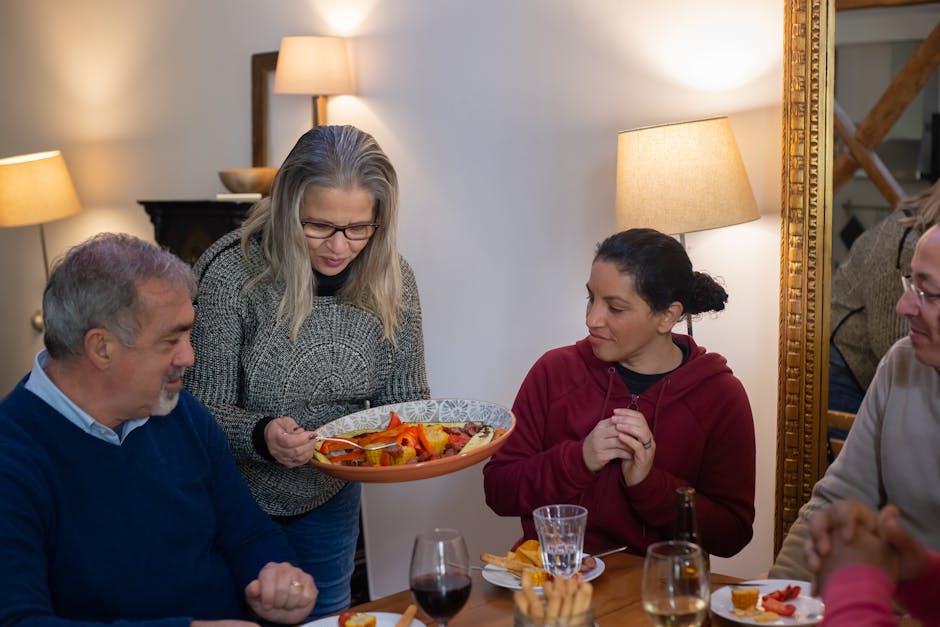Underconsumption isn’t just about spending less; it’s about living more intentionally. It’s reshaping how we think about money, happiness, and fulfillment.
More people are embracing a frugal lifestyle that values quality over quantity. But this new frugality is far from deprivation—it’s creative, mindful, and surprisingly liberating.
By consuming less, we not only save money but regain time and mental space. Underconsumption invites us to question what we truly need versus what we’re told to want.
This shift is influencing everything from shopping habits to our relationship with technology. It’s a lifestyle change that’s as much about mindset as it is about dollars and cents.
In this article, we’ll explore 18+ ways underconsumption is shaping this fresh take on frugality. You might find some new ideas to simplify and enrich your own life.
Ready to rethink what “enough” means? Let’s dive into the practical ways underconsumption is creating a more intentional, frugal lifestyle.
Mindful Spending: Prioritizing Needs Over Wants
At the heart of underconsumption is a mindset shift—moving from impulse buying to thoughtful spending. This means distinguishing between what we truly need and what’s just a fleeting desire.
When we pause before making purchases, we often realize many items aren’t necessary. This awareness helps reduce clutter and frees up money for experiences or savings.
Here are five mindful spending strategies that help cultivate intentional consumption:
1. Practice the 30-day rule – Before making non-essential purchases, wait 30 days to see if you still want the item. This cooling-off period helps curb impulse buys and encourages more thoughtful decisions.
2. Use cash-only envelopes – Allocate physical cash for categories like groceries or entertainment. When the envelope is empty, spending stops, making you more aware of your limits and reducing overspending.
3. Track every purchase – Write down or log every expense, no matter how small. This habit reveals spending patterns and areas where underconsumption can be practiced more effectively.
4. Set spending priorities – List your top financial goals and align purchases with them. When wants aren’t in line with your priorities, it’s easier to say no.
5. Unsubscribe from marketing emails – Reducing exposure to sales and ads lessens temptation. Without constant reminders, you’re less likely to buy things you don’t need.
Mindful spending lays the groundwork for deeper frugality by reorienting your relationship with money and consumption. Next, we’ll explore how simplifying your possessions complements this mindset.
Minimalist Living: Simplifying Possessions and Spaces
Underconsumption often leads to minimalism—a lifestyle focused on owning less but gaining more freedom. Fewer possessions mean less maintenance, lower expenses, and a clearer mind.
Minimalist living encourages decluttering and resisting the urge to accumulate. It’s not about deprivation but creating space for what truly matters in your home and life.
Here are five ways minimalism supports the new frugal lifestyle:
6. Adopt the “one in, one out” rule – For every new item brought into your home, remove an old one. This keeps possessions in check and prevents clutter from sneaking back in.
7. Declutter with intent – Regularly assess your belongings and donate or sell what you don’t use. This process not only frees space but can also generate extra cash.
8. Choose multi-purpose items – Invest in versatile products that serve several functions, reducing the need to buy multiples and saving money and space.
9. Create capsule wardrobes – Build a small collection of clothing that mix and match well, cutting down on fashion spending and decision fatigue.
10. Limit sentimental clutter – Keep meaningful items but avoid hoarding everything. Photograph or document memories to preserve them without physical accumulation.
Minimalism pairs beautifully with mindful spending, helping you live with less but enjoy more. Now, let’s look at how underconsumption influences food choices and meal habits.
Frugal Food Habits: Eating Well Without Overspending
Food is a major household expense, but underconsumption invites smarter, more intentional eating. This means focusing on nourishing meals without waste or excess.
Frugal food habits often encourage cooking at home, reducing reliance on takeout, and using every ingredient fully. This reduces costs and improves health.
Here are five practical food-related strategies shaped by underconsumption:
11. Meal plan with leftovers in mind – Planning meals around ingredients that can be reused minimizes waste and stretches your grocery budget further.
12. Buy in bulk and freeze – Purchasing staple foods in larger quantities can save money over time. Freezing portions prevents spoilage and provides convenience.
13. Grow herbs or small veggies – Even a windowsill garden can provide fresh produce, reducing trips to the store and adding flavor without extra cost.
14. Shop seasonal and local – Seasonal produce tends to be cheaper and fresher, while supporting local farmers reduces transportation costs and environmental impact.
15. Practice “use it up” cooking – Get creative with leftovers or odds and ends in your fridge to create new meals instead of tossing food away.
Food habits that embrace underconsumption not only save money but encourage healthier, more sustainable choices. Up next, we’ll explore how technology and media consumption fit into this frugal lifestyle.
Digital and Media Underconsumption: Cutting Costs and Clutter
Our digital lives can become a source of unnecessary spending and distraction. Underconsumption here means choosing quality over quantity in media and tech usage.
Reducing subscriptions, limiting screen time, and focusing on meaningful content can cut costs and improve mental clarity. It’s about controlling technology instead of letting it control you.
Here are five ways to practice digital and media underconsumption:
16. Audit and cancel unused subscriptions – Streaming services, apps, and memberships add up. Regularly reviewing and cutting what you don’t use immediately saves money.
17. Set screen time limits – Use built-in tools to restrict time on social media or entertainment apps, reducing distractions and impulsive online shopping.
18. Borrow digital content – Utilize library apps for ebooks, audiobooks, and movies to satisfy entertainment needs without extra spending.
19. Choose long-lasting tech – Instead of upgrading gadgets frequently, invest in durable devices and keep them longer to avoid unnecessary purchases.
20. Practice digital decluttering – Regularly clean out emails, files, and apps to reduce cognitive overload and create a sense of digital calm.
Streamlining digital habits supports both financial goals and mental well-being. Finally, let’s discuss how community and relationships are evolving with the new frugal mindset.
Community and Social Underconsumption: Building Connections Without Breaking the Bank
Underconsumption isn’t just personal—it also shapes how we socialize and engage with others. Frugality can strengthen community bonds through resource sharing and simple pleasures.
Rather than expensive outings or gift-giving, people are turning to meaningful, low-cost ways to connect. This shift nurtures relationships without financial strain.
Here are five ways community underconsumption enriches social life:
21. Host potlucks instead of dining out – Sharing homemade meals with friends lowers costs and creates a warm, collaborative atmosphere.
22. Organize skill-sharing groups – Trading skills like gardening, sewing, or car repair reduces expenses and builds community support networks.
23. Participate in clothing swaps – Refresh your wardrobe sustainably by exchanging clothes with friends or local groups instead of buying new items.
24. Choose experiences over gifts – Suggest low-cost shared activities like hikes, game nights, or picnics as alternatives to costly presents.
25. Utilize local free events and resources – Libraries, community centers, and parks offer affordable ways to socialize and learn without spending much.
Community-focused underconsumption highlights that frugality can deepen connections and joy, not just trim budgets. Embracing these social shifts rounds out the new frugal lifestyle beautifully.
Underconsumption is reshaping frugality into a lifestyle of intention, simplicity, and connection. By spending mindfully, simplifying possessions, eating wisely, managing digital use, and nurturing community, we gain more than just savings.
These strategies encourage us to focus on what truly matters, fostering well-being and resilience. Try incorporating one or two of these ideas today and notice the difference.
What’s your favorite way to practice underconsumption? Share your stories and join the conversation—frugality is more fun when we learn from each other.



